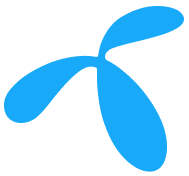
How our mobility data can help predict and prevent the spread of COVID-19
In the battle against COVID-19, knowledge is power. For that very reason, there’s a chance that aggregated mobility data may be one of the secret weapons authorities need to control the spread of the virus.
PRODUCED BY TELENOR
“Blue is definitely my favorite color these days,” says Kenth Engø-Monsen, observing the blue dots popping up on a map of Norway displayed on his screen.
The darker the shade of blue, the more he smiles.
Since January, before any cases of COVID-19 were detected in Norway, Telenor had already started to provide the Norwegian Institute of Public Health (NIPH) with mobility data on people’s movement between the country’s 356 municipalities.
Credit: Tormod Tørstad/Telenor Infra
The generated data NIPH receives from Telenor is based on phone signalling. To have good coverage, your phone will always connect to the closest possible base station, and you will leave a location trace. The anonymized data based on location traces are extracted from Telenor Norway’s more than 8,100 base stations across the country.
Credit: Tormod Tørstad/Telenor Infra
“What we have here is data on people’s movement from one specific area to another. Red means we have an increase in movement, blue signals a decrease. The shades indicate the frequency. The darker it is, the lower the frequency,” Engø-Monsen explains, as Norway becomes slowly covered in blue on his screen, much of it dark blue.
See how people in Norway moved around before and after corona-related travel restrictions:
The maps show people’s movement in Norway on 10 March throughout 15 March, compared to people’s movement on the same day the previous week. The blue color a decrease in movement. “I have never before witnessed such a massive drop in people’s movement, as we are seeing now,” says Engø-Monsen.
Predicting spread scenarios
“The statistics are fascinating, and show exceptional changes, but more importantly, this information can help health authorities in their work to prevent the spread of COVID-1”, he says.
At NIPH, a corona taskforce uses Telenor’s mobility dataset to predict plausible spread scenarios of the virus in Norway.
“We have created a metapopulation COVID-19 transmission model. The model consists of three layers: a population structure of each municipality; a disease transmission model of each municipality; and the mobility data describing movements between municipalities,” explains Birgitte Freiesleben de Blasio, Department Director at NIPH.
de Blasio says the information is used to quantify the number of hospitalisations and intensive care beds needed, both at the local and national level.
“During public health emergencies, like the current COVID-19 pandemic, public health authorities need to make decisions on interventions measures and target response needs. In these situations, mathematical models are valuable tools for preparedness planning and decision making,” adds de Blasio.
Department Director Birgitte Freiesleben de Blasio’s team consists of experts from NIPH, the University of Oslo and the Norwegian Computing Center. Kenth Engø-Monsen partakes in all the meetings regarding the transmission model.
Credit: Stian Kristoffer Sande

Counting Signals
Telenor now counts the aggregated people movement from base station data every six hours, every day, in order to give NIPH access to the most updated and comprehensive datasets available on Norwegians travel patterns.
This is where the Mobility Analytics team in Telenor Norway comes in.
“About 80 percent of all the data traffic in Norway passes through our network. This dataset gives insight into the whole population, not only Telenor’s market share,” says Marte Ruud Sandberg, Product Marketing Manager in Telenor Business IoT and Big Data.

Marte Ruud Sandberg and her team in Telenor Norway Analytics get a lot of acknowledgment from Engø-Monsen on their work. “They are doing a fantastic job of extracting the datasets,” he says.
Credit: Stian Kristoffer Sande
Detailed, yet anonymous
When handling user data, questions regarding anonymity often arise. Engø-Monsen ensures that no one runs the risk of being exposed.
“We anonymise all data, so it is not possible for anyone to identify users. Our goal is not to know where a single individual travels, but to get an overview of the general travel pattern in the different municipalities,” says Engø-Monsen.
The researcher explains that every mobile operator is constantly collecting data about subscribers’ locations in order to provide the most optimised service possible.
“When someone is calling you, the system needs to know what cell tower your handset is connected to so that the call can be directed to that cell tower. This gives an approximate device location, but all this big data is only flowing through our systems for a short period before it is deleted,” he explains.
Telenor Research’s Kenth Engø-Monsen ensures that all data extracted from Telenor’s base stations are anonymised.
Credit: Stian Kristoffer Sande
Big data to empower societies
Taking up the fight against diseases is no new experience for Telenor.
“We have for many years been involved in Big Data for Social Good projects, where we have used aggregated mobility data to gain a deeper understanding of the spread of the dengue virus in Pakistan and malaria in Bangladesh. Witnessing the escalating outbreak of COVID-19, we quickly realised that Telenor Norway was able to generate the same type of useful data as in the other cases,” says Engø-Monsen.
Telenor Group’s President and CEO, Sigve Brekke, says the project is part of Telenor’s responsibility to support society-at-large.
“All of us have to work together in the face of this considerable challenge, and Telenor is committed to doing our part. We always want to explore and contribute to societies around us, and this project is a great combination of both. For Telenor, this is truly a way we can help empower societies,” says Brekke.
Produced by Telenor